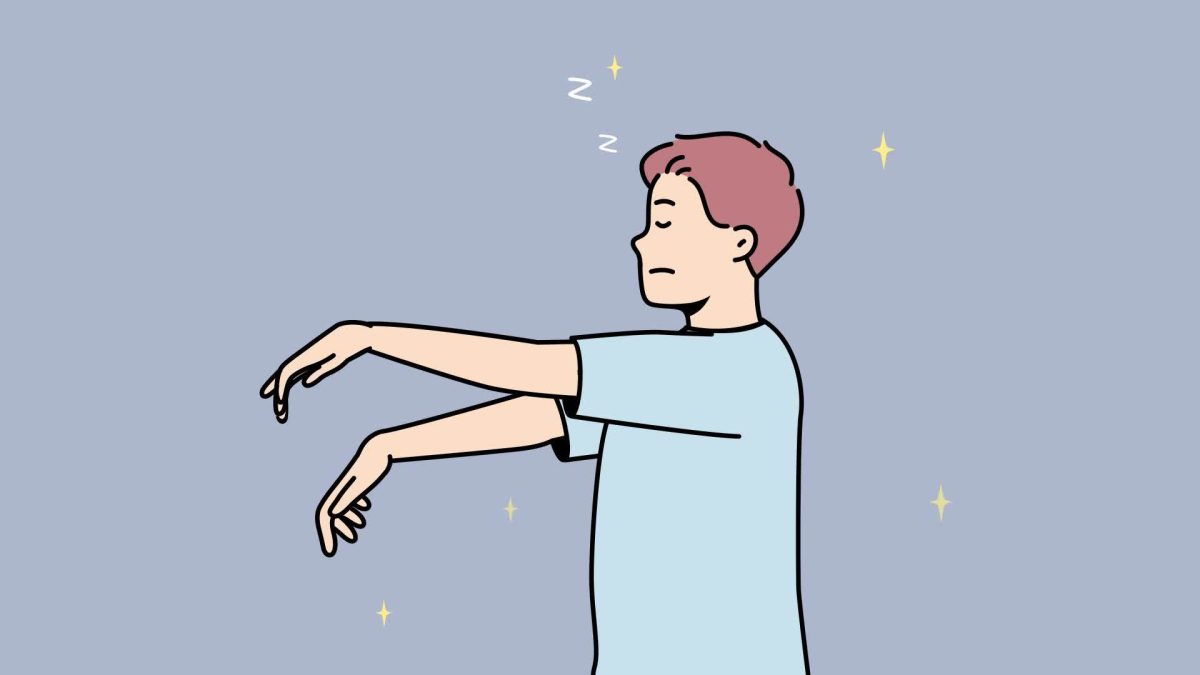Studies show that during episodes of sleepwalking, individual neurons are capable of exhibiting unusual electrical activity. Because of this, some parts of the brain structures are activated and sleep becomes “partial” and “incomplete”. But the parts responsible for consciousness continue to be in a state of sleep. At first glance, it seems impossible to sleep and walk or do any other activity at the same time, but thanks to the above-mentioned features of the brain, it happens. Some areas of the brain, such as those responsible for coordination and movement, can function separately from others.
For example, watchmen often have such partial sleep. They can fall asleep even while standing. The centers of the brain responsible for maintaining balance and movement are in an active state, and the brain itself is in a state of sleep. Or another example – a mother lulls a restless child in a stroller and continues to make her movements even after she herself has fallen asleep.
At the moment when a person in a sleepy state begins to walk, certain areas of the brain wake up uncontrollably. This is caused by the abnormal activity of some nerve cells. The causes of sleepwalking in adults are most often associated with:
• epilepsy;
• stress;
• depression;
• fatigue;
• excessive alcohol consumption;
• genetic disorders that cause stimulation of some genes capable of affecting the nervous system;
• disorders of the upper respiratory tract, leading to breathing disorders during sleep;
• obsessive-compulsive neurosis;
• diabetes and manifestations of nocturnal hypoglycemia;
• migraine;
• intoxication;
• inflammatory diseases of the brain;
• obstructive lung diseases;
• a state of chronic stress;
• chronic fatigue syndrome;
• consequences of brain injury;
• vascular diseases of the brain;
• magnesium deficiency;
• neoplasm of the brain;
• senile dementia;
• cardiac arrhythmia;
• taking some medicines;
• asthma;
• short-term respiratory arrest;
• gastroesophageal reflux disease;
• high or low blood pressure;
• hyperthermia;
• work in night shifts;
• insomnia.
Confusion, lack of reaction, clumsiness, glassy eyes can indicate that a person suffers from sleepwalking. A sleepwalker can walk around the apartment, get dressed, pick up some things, rearrange various objects. He may even leave home in an unknown direction.
However, the frequency of such episodes can be reduced with the help of the following recommendations: sleep at least 7-10 hours at night, sleep in comfortable conditions (comfortable bed, temperature 18-22°C and darkness in the room, etc.), reducing stress, taking medications prescribed by a doctor (lorazepam, amitriptyline, etc.), taking modafinil drugs (Modavigil, Modalert). In addition, other sleep disorders such as obstructive sleep apnea, depression and anxiety, or other conditions must be ruled out. This can help relieve the symptoms of sleepwalking.








